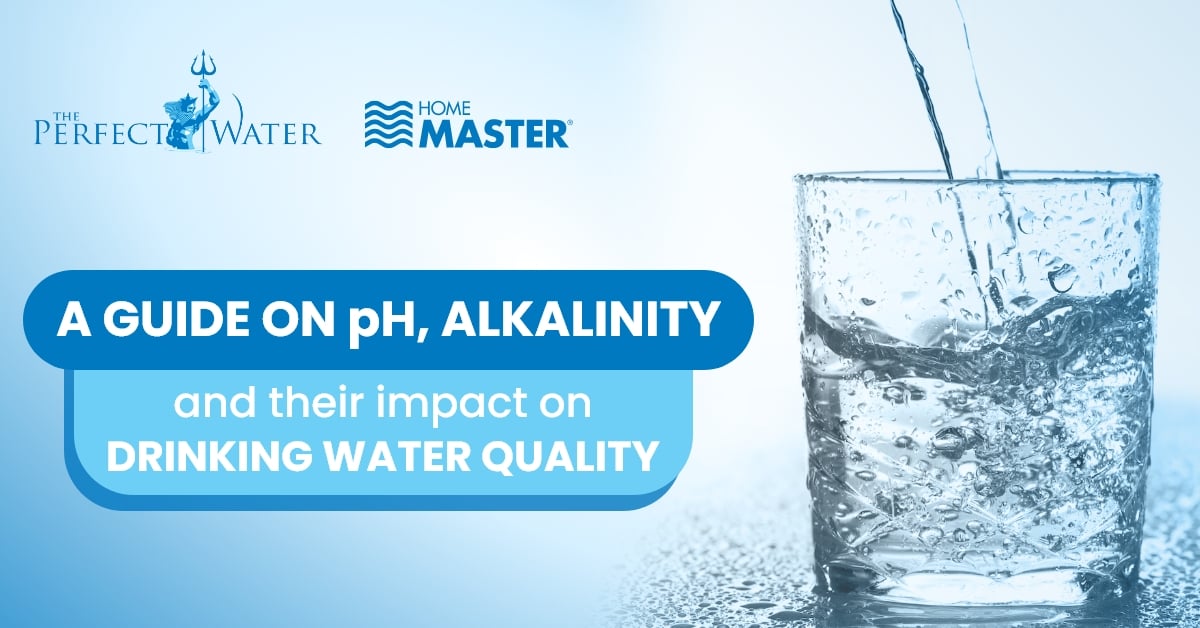
The fundamental characteristic of water plays a pivotal role in various human and scientific disciplines, ranging from better health, environmental studies to industrial processes. Two key parameters, pH (pondus hydrogenii) and alkalinity, stand out as vital indicators of water quality and chemical equilibrium. pH and alkalinity are important parameters that are used to assess the quality of drinking water. Although often used interchangeably or misconstrued as synonymous concepts, pH and alkalinity are specific measures that offer unique insights into the chemical behavior and buffering capacity of water.
By clarifying the disparities between pH and alkalinity, this article aims to widen the understanding of pure drinking water and various processes. Consequently, the findings presented herein will aid in informed decision-making, identifying water quality, and the development of appropriate water purification methodologies. It also intends to elucidate the critical dissimilarities between pH and alkalinity, shedding light on their underlying principles, practical implications, and other facets.
Definition of pH and alkalinity with their effects on water quality
Acidic and basic represent the nature of any solution or substance. When acids and bases are combined, their effects get nullified and turn into a ‘neutral’ solution, as neither acidic nor basic, like water. Water has a ‘neutral’ nature so we can drink it in everyday life. Water has acid and basic characteristics in equal amounts. Thus, its buffering capacity keeps the pH value stable as acids or bases are added. Further, understand the definition of pH and alkalinity, respectively, with their impacts on water quality.
pH definition
pH denotes the degree of acidity or alkalinity of a solution or water, measured on a logarithmic scale of 0 to 14. It primarily reflects the concentration of hydrogen ions (H+) and hydroxide ions (OH-) present in a solution, thereby providing a measure of its nature as acidic or basic. When things are acidic, they taste sour; if things are basic or alkaline, they taste soapy. On this pH scale, each number represents a ten-fold change in any solution's respective acidic or basic nature. Water with a pH unit of 5 is tenfold more acidic than water with a pH 6.
pH and water quality
The pH scale ranges from 0 to 14, with 7 being neutral. Values below 7 indicate acidity, while values above 7 indicate alkalinity. Besides water's taste, PH levels significantly influence water quality. A slight deviation from the optimal range can have adverse consequences. Excessive highs and lows in pH values have some concerns about the usability of water. A higher pH level not only imparts an unpleasant bitter taste of water but also leads to the accumulation of deposits in water pipes and appliances, hampering their functionality and further lessening the life of appliances. Whereas acidic water will erode metal pipes, solder, fittings and finishes potentially leading to toxic metals leaching into the water and leaks depending on the materials present and the water’s acidity.
Impact of pH on Drinking Water Quality:
-
Corrosion: The pH of water can affect the corrosion of plumbing systems and fixtures. Water with low pH (acidic water) tends to be corrosive and can dissolve metals like lead, copper, and zinc from pipes, fittings, and fixtures. This can result in elevated levels of these metals in the drinking water, which can be harmful to human health, especially with prolonged exposure.
-
Taste and Odor: The pH of water can influence its taste and odor. Water with low pH may taste sour or metallic, while water with high pH (alkaline water) can have a bitter or soapy taste. Neutralizing the pH within an acceptable range can improve the taste and overall palatability of drinking water.
-
Disinfection Efficiency: The effectiveness of disinfection processes, such as chlorination, is influenced by pH. Chlorine-based disinfectants are most effective in a specific pH range (usually around 7-8.5). If the pH deviates significantly from this range, the disinfection process may be compromised, leading to inadequate protection against harmful microorganisms. In an acidic water environment UV sterilization may be preferable, as it functions normally at lower pH values 4-9 pH.
Furthermore, high pH levels diminish the efficacy of chlorine disinfection. This situation requires the use of additional chlorine for effective purification. Conversely, low-pH water shows corrosive properties that can corrode metals and dissolve various substances, giving adverse consequences such as leaching metals. A reasonably stable pH level is needed to keep the water pH level neutral and usable. Water's pH level is usually affected by pollution, especially atmospheric carbon dioxide (CO2) gas. The water's dissolved carbon dioxide (CO2) portion impacts the pH level inversely; the lower the dissolved carbon dioxide (CO2), the higher the pH level, and vice versa.
Alkalinity definition
Alkalinity represents the water's capacity to neutralize acids and maintain a stable pH level. The ion concentration available in a specific water volume neutralizes the hydrogen ions. The commonly available alkalinity components are bicarbonate (HCO3-), carbonate (CO32-), and hydroxide (OH-) ions, which contribute to the buffering capacity of water against changes in pH levels. The alkalinity is measured in the units of milligrams of CaCO3 per liter (mg/L) required for a specific endpoint to lower the pH in a water sample.
A higher level of alkalinity makes water taste bitter to drink. Along with this, the major impact of water alkalinity is reactions that may occur between alkalinity and certain cations in water that results in hard water scaling glassware, water pipes clogging and damage to other accessories of the water supply network.
After observations and study, it has been noticed that most natural waterfalls' pH level is between 6 to 8.5, a region where the bicarbonate and carbonate equilibrium is inclined towards bicarbonate. Thus, bicarbonate concentration goes higher than the hydroxyl or hydrogen ion concentrations. So, alkalinity is approximately equal to the bicarbonate concentration in the water sample.
Read: Effect of alkalinity in buffering against pH changes
Impact of Alkalinity on Drinking Water Quality:
-
Buffering Capacity: Alkalinity plays a crucial role in maintaining the stability of water pH. It acts as a buffer, preventing large fluctuations in pH when acids or bases are added to the water. In natural water sources, alkalinity helps maintain a stable pH, which is important for the well-being of aquatic organisms. In drinking water, alkalinity can help stabilize the pH and prevent it from becoming too acidic or too alkaline, ensuring that the water remains safe and suitable for consumption.
-
Corrosion Control: Adequate alkalinity levels in water can help prevent corrosion of metal pipes, fittings, and fixtures. Alkalinity acts as a protective barrier, forming a thin, insoluble layer on the metal surfaces. This layer reduces the contact between the water and the metal, minimizing the risk of metal leaching into the water supply.
-
Scaling: On the other hand, excessive alkalinity can lead to scaling or the formation of mineral deposits in pipes, water heaters, glassware and appliances. Scaling occurs when the concentration of dissolved minerals, such as calcium carbonate (CaCO3), exceeds their solubility limits. These deposits can reduce water flow, decrease the efficiency of heat transfer in water heaters and boilers, and increase energy consumption. Regular maintenance and treatment may be required to address scaling issues in areas with high alkalinity levels.
Alkalinity and water quality
Alkalinity buffers the pH level of water and thus has a significant role in deciding the water quality and its impact on aquatic organisms. They have a favorable environment for living with a stable pH or high alkalinity water. Alkalinity is primarily related to water hardness as the essential source of alkaline water comes from carbonate rocks (CaCO3 or limestone). As alkalinity buffers the pH level of water, therefore some recommend alkaline water as it neutralizes the acidity in the human body, though much research evidence is still unclear. Alkaline water should have the presence of alkaline minerals and a negative oxidation-reduction potential (ORP). ORP, as a sanitary indicator for water quality, was suggested by the World Health Organization (WHO, 1971) to determine and monitor the oxidation levels of free chlorine in treated drinking water.
Differences between pH and alkalinity Relating to Drinking Water
-
pH: Water with extreme pH values (either highly acidic or highly alkaline) can have negative impacts on water quality. Low pH water can be corrosive, causing the leaching of metals, while high pH water can lead to scale formation and reduce the effectiveness of disinfection. The recommended pH range for drinking water is typically between 6.5 and 8.5.
-
Alkalinity: Pure water has a limited ability to buffer against changes in Ph. Alkalinity is crucial for maintaining the stability of water pH. It acts as a buffer, preventing large pH swings that could compromise water quality or taste. Adequate alkalinity helps control corrosion, prevents scaling, and ensures the effectiveness of disinfection processes. The recommended alkalinity range for drinking water is typically within 20-200 mg/L as CaCO3.
In summary, pH measures the acidity or alkalinity of water, while alkalinity measures the water's capacity to neutralize acids. pH indicates the water's current state of acidity or alkalinity, while alkalinity represents its ability to resist changes in pH. Both parameters are important for assessing and maintaining the quality of drinking water, with pH influencing taste, corrosion, and disinfection, and alkalinity influencing pH stability, corrosion control, and scaling prevention.
Importance of understanding pH and alkalinity in different contexts
A low level of alkalinity and acidity in water has no significant health effects; however, higher alkalinity and acidity are usually considered unpalatable. In the context of groundwater, several parameters, including EC, TDS, TSS, Ca, SO42-, total alkalinity, Zn, Mn, Cu, fecal coliform, and total coliform exhibited a significant correlation with optimal water pH, indicating a zero-order relationship. Conversely, surface water studies found that only TSS, turbidity, total alkalinity, and Ca emerged as significant predictors of optimal pH levels.
The alkaline water of higher pH with alkaline minerals such as magnesium, calcium, iron, and potassium has been suggested to offer potential health benefits. Studies suggest that drinking mineral-rich alkaline water aids in maintaining the body's pH balance, promoting hydration, and providing essential minerals. Compared to reverse osmosis (RO) drinking water, which has a low acidic nature, alkaline water with minerals has specific health benefits; however, more research is required to support these claims.
In a study, it has been found that alkaline water rich in bicarbonate led to a significant decrease in PTH (Parathyroid hormone) and S-CTX (carboxy-terminal collagen crosslinks) that improves bone health compared to acid-calcium-rich water intake.
Additionally, another study supports alkaline drinking water as the high-pH water reduces blood viscosity and the thickness of blood, which may help reduce cardiovascular and heart health risks.
Conclusion
A significant relationship exists between pH, alkalinity, and water quality. It has been established that pH and alkalinity are distinct but interconnected factors that impact the characteristics and quality of water. Alkaline water is safe to drink at lower alkalinity levels.
